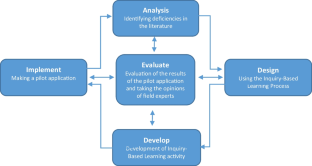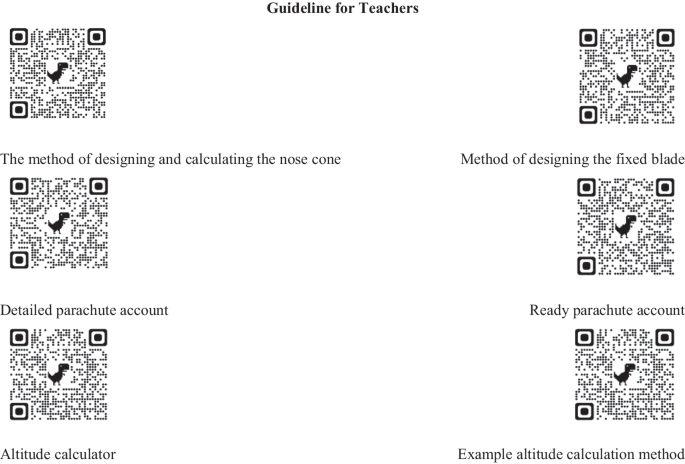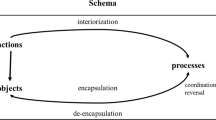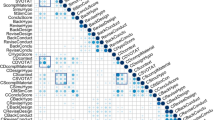Abstract
There is a great need for applied studies at the K-12 level on how creative problem solving skills can be developed in out-of-school environments and what kind of learning activities can be used. Therefore, in this study, the effects of inquiry-based STEM (Science, Technology, Engineering and Mathematics) activities on students' STEM awareness and creative thinking skills in an out-of-school learning environment were investigated and the advantages and disadvantages of inquiry-based STEM activities were tried to be determined with student opinions. The study group of this mixed-method study consisted of 32 11th grade students selected voluntarily. Creative Problem Solving and STEM Awareness scales and a semi-structured interview form were used in the study. The findings of the study showed that inquiry-based STEM activities planned in an out-of-school learning environment improved students' creative problem solving skills and STEM awareness. Both qualitative and quantitative findings support that the activities improved students' problem solving skills and productivity and encouraged them to work collaboratively.


Similar content being viewed by others
Data availability
Our manuscript has no associated data.
References
Abdullah, N., Halim, L., & Zakaria, E. (2014). VStops: A thinking strategy and visual representation approach in mathematical word problem solving toward enhancing STEM literacy. Eurasia Journal of Mathematics, Science & Technology Education, 10(3), 165–174. https://doi.org/10.12973/eurasia.2014.1073a
Abdurrahman, A., Nurulsari, N., Maulina, H., & Ariyani, F. (2019). Design and validation of inquiry-based STEM learning strategy as a powerful alternative solution to facilitate gift students facing 21st century challenging. Journal for the Education of Gifted Young Scientists, 7(1), 33–56. https://doi.org/10.17478/jegys.513308
Adams, A. E., Miller, B. G., Saul, M., & Pegg, J. (2014). Supporting elementary pre-service teachers teach STEM through place-based teaching and learning experiences. The Elektronic Journal for Research in Science & Mathematics Education, 18(5), 1–22.
Affifi, R. (2019). Chapter 4 between will and wildness in STEAM education. Critical Issues in the Future of Learning and Teaching, 18, 79–99. https://doi.org/10.1163/9789004421585_006
Arık, M., & Topçu, M. S. (2020). Implementation of engineering design process in the K-12 science classrooms: Trends and issues. Research in Science Education, 52, 21–43. https://doi.org/10.1007/s11165-019-09912-x
Baran, E., CanbazogluBilici, S., Mesutoglu, C., & Ocak, C. (2019). The impact of an out-of-school STEM education program on students’ attitudes toward STEM and STEM careers. School Science and Mathematics, 119(4), 223–235. https://doi.org/10.1111/ssm.12330
Bicer, A., Boedeker, P., Capraro, R. M., & Capraro, M. M. (2015). The effects of STEM PBL on students’ mathematical and scientific vocabulary knowledge. International Journal of Contemporary Educational Research, 2(2), 69–75. http://ijcer.net/en/download/article-file/147916
Boaventura, D., Faria, C., & Guilherme, E. (2020). Impact of an inquiry-based science activity about climate change on development of primary students’ investigation skills and conceptual knowledge. Interdisciplinary Journal of Environmental and Science Education, 16(4), 2225. https://doi.org/10.29333/ijese/8554
Branch, R. M. (2009). Instructional design: The ADDIE approach. Springer Science & Business Media. https://doi.org/10.1007/978-0-387-09506-6
Buyruk, B., & Korkmaz, Ö. (2014). STEM awareness scale (SAS): Validity and reliability study. Journal of Turkish Science Education, 11(1), 3–23. https://doi.org/10.12973/tused.10179a
Cantrell, P., Pekcan, G., Itani, A., & Velasquez-Bryant, N. (2006). The effects of engineering modules on student learning in middle school science classrooms. Journal of Engineering Education, 95(4), 301–309. https://doi.org/10.1002/j.2168-9830.2006.tb00905.x
Capobianco, B. M., DeLisi, J., & Radloff, J. (2018). Characterizing elementary teachers’ enactment of high-leverage practices through engineering design-based science instruction. Science Education, 102, 342–376. https://doi.org/10.1002/sce.21325
Chan, L. L., & Idris, N. (2017). Validity and reliability of the instrument using exploratory factor analysis and Cronbach’s alpha. International Journal of Academic Research in Business and Social Sciences, 7(10), 400–410.
Chen, H. T., Wang, H. H., Lin, H. S., Lawrenz, F. P., & Hong, Z. R. (2014). Longitudinal study of an after-school, inquiry-based science intervention on low-achieving children’s affective perceptions of learning science. International Journal of Science Education, 36, 2133–2156. https://doi.org/10.1080/09500693.2014.910630
Chew, C. M., Idris, N., Leong, K. E., & Daud, M. F. (2013). Secondary school assessment practices in science, technology, engineering and mathematics (STEM) related subjects. Journal of Mathematics Education, 6(2), 58–69. https://ssrn.com/abstract=2431552
Cohen, J. (1988). Statistical power analysis for the behavioral sciences (2nd ed.). Lawrence Erlbaum Associates, Publishers.
Cotabish, A., Dailey, D., Robinson, A., & Hunghes, G. (2013). The effects of a STEM intervention on elementary students’ science knowledge and skills. School Science and Mathematics, 113(5), 215226. https://doi.org/10.1111/ssm.12023
Daugherty, J. L. (2012). Infusing engineering concepts: Teaching engineering design. Retrieved from ERIC database. (ED537384).
DeCoito, I., & Richardson, T. (2018). Beyond Angry Birds™: Using Web-Based Tools to Engage Learners and Promote Inquiry in STEM Learning. In information and technology literacy: Concepts, methodologies, tools, and applications (pp. 410–433). IGI Global. https://doi.org/10.4018/978-1-5225-3417-4.ch023
Doppelt, Y., Mehalik, M. M., Schunn, C. D., Silk, E., & Krysinski, D. (2008). Engagement and achievements: a case study of design-based learning in a science context. Journal of Technology Education, 19(2), 22–39. Retrieved from ERIC database. (EJ898815).
Gómez, R. L., & Suárez, A. M. (2020). Do inquiry-based teaching and school climate influence science achievement and critical thinking? Evidence from PISA 2015. International Journal of STEM Education, 7(1), 1–11. https://doi.org/10.1186/s40594-020-00240-5
Heindl, M. (2018). Inquiry-based learning and its possibilities for primary schools with fewer digital resources – a qualitative study. Pedagogical Research, 3(3), 1–8. https://doi.org/10.20897/pr/3932
Holincheck, N., & Galanti, T. (2022). Are you a STEM teacher?: Exploring K-12 teachers’ conceptions of STEM education. Journal of STEM Education: Innovations and Research, 23(2), 23–29. Retrieved from https://jstem.org/jstem/index.php/JSTEM/article/view/2551/2271
Hooper, D., Coughlan, J., & Mullen, M. R. (2008). Structural equation modelling: Guidelines for determining model fit. Electronic journal of business research methods, 6(1), 53–60. https://doi.org/10.21427/D7CF7R
Huck, S. W. (2012). Reading statistics and research (6th ed.). Longman.
İpek, J., Altay, G., Altunsaban, C., Adsay, M., & Ergin, H. (2018). Evaluation of creative problem solving process scale: The adaptation study into Turkish. Necatibey Faculty of Education Electronic Journal of Science and Mathematics Education, 12(2), 727–738. https://doi.org/10.17522/balikesirnef.506517
Isaksen, S. G., & Treffinger, D. J. (2004). Celebrating 50 years of reflective practice: Versions of creative problem solving. The Journal of Creative Behavior, 38(2), 75–101. https://doi.org/10.1002/j.2162-6057.2004.tb01234.x
Karisan, D., Macalalag, A., & Johnson, J. (2019). The effect of methods course on preservice teachers’ awareness and intentions of teaching science, technology, engineering, and mathematics (STEM) subject. International Journal of Research in Education and Science, 5(1), 22–35. Retrieved from ERIC database. (EJ1198055).
Katehi, L., Pearson, G., & Feder, M. (2009). Engineering in K–12 education: Understanding the status and improving the prospects. The National Academies Press.
Kim, D., & Bolger, M. (2017). Analysis of Korean elementary preservice teachers’ changing attitudes about integrated STEAM pedagogy through developing lesson plans. International Journal of Science and Mathematics Education, 15(4), 587–605.
Kim, D. H., Ko, D. G., Han, M. J., & Hong, S. H. (2014). The effects of science lessons applying STEAM education program on the creativity and interest levels of elementary students. Journal of the Korean Association for Science Education, 34(1), 43–54.
Krishnamurthi, A., Ballard, M., & Noam, G.G. (2014). Examining the impact of afterschool STEM programs: A paper commissioned by the noyce foundation. Afterschool Alliance. Retrieved from https://www.afterschoolalliance.org
Kwon, S. B., Nam, D. S., & Lee, T. W. (2012). The effects of STEAM-based integrated subject study on elementary school students’ creative personality. The Korea Society of Computer and Information, 17(2), 79–86.
Lavonen, J., Autio, O., & Meisalo, V. (2004). Creative and collaborative problem solving in technology education: A case study in primary school teacher education. Journal of Technology Studies, 30(2), 107–115.
Lederman, N. G., Lederman, J. S., & Antink, A. (2013). Nature of science and scientific inquiry as contexts for the learning of science and achievement of scientific literacy. International Journal of Education in Mathematics, Science and Technology, 1, 138–147. https://doi.org/10.18404/ijemst.19784
Liang, W., & Fung, D. (2022).Designing STEM education in small class teaching environments: The Hong Kong experience. The Asia-Pacific Education Researcher, 1–21. https://doi.org/10.1007/s40299-022-00643-8
Lim, B. R. (2004). Challenges and issues in designing inquiry on the Web. British Journal of Educational Technology, 35(5), 627–643. https://doi.org/10.1111/j.0007-1013.2004.00419.x
Maeng, J. L., Whitworth, B. A., Gonczi, A. L., Navy, S. L., & Wheeler, L. B. (2017). Elementary science teachers’ integration of engineering design into science instruction: Results from a randomised controlled trial. International Journal of Science Education, 39(11), 1529–1548.
Maker, C. J. (2020). Identifying exceptional talent in science, technology, engineering, and mathematics: Increasing diversity and assessing creative problem-solving. Journal of Advanced Academics, 31(3), 161–210. https://doi.org/10.1177/1932202X20918203
Marshall, J. C., & Alston, D. M. (2014). Effective, sustained inquiry-based instruction promotes higher science proficiency among all groups: A 5-year analysis. Journal of Science Teacher Education, 25, 807–821. https://doi.org/10.1007/s10972-014-9401-4
Maxwell, J. A. (2016). Expanding the history and range of mixed methods research. Journal of Mixed Methods Research, 10(1), 12–27. https://doi.org/10.1177/1558689815571132
Miles, M. B., & Huberman, A. M. (1994). Qualitative data analysis. SAGE.
Mitchell, W. E., & Kowalik, T. F. (1989). Creative Problem Solving (3rd ed.). Genigraphics Inc.
Mohr-Schroeder, M. J., Jackson, C., Miller, M., Walcott, B., Little, D. L., Speler, L., & Schroeder, D. C. (2014). Developing middle school students’ interests in STEM via summer learning experiences: See Blue STEM C amp. School Science and Mathematics, 114(6), 291–301. https://doi.org/10.1111/ssm.12079
Molenda, M. (2003). In search of the elusive ADDIE model. Performance Improvement, 42(5), 34–36. https://doi.org/10.1002/pfi.4930420508
Moore, T. J., Tank, K. M., & English, L. (2018). Engineering in the early grades: Harnessing children’s natural ways of thinking. In L. English & T. Moore (Eds.), Early engineering learning (pp. 9–18). Singapore: Springer. NAE. (2010). https://doi.org/10.1007/978-981-10-8621-2_2
Morrison, G. R. (2010). Designing effective instruction (6th ed.). John Wiley & Sons.
Nugent, G., Barker, B., Grandgenett, N., & Adamchuk, V. I. (2010). Impact of robotics and geospatial technology interventions on youth STEM learning and attitudes. Journal of Research on Technology in Education, 42(4), 391–408. https://doi.org/10.1080/15391523.2010.10782557
Pallant, J. F. (2000). Development and validation of a scale to measure perceived control of internal states. Journal of Personality Assessment, 75(2), 308–337. https://doi.org/10.1207/S15327752JPA7502_10
Pektaş, H. M., Karamustafaoğlu, S., & Karamustafaoğlu, O. (2022). Designing an inquiry-based STEM activity: example of force and motion. Karabakh III. International congress of modern studies in social sciences and humanities "Year of Shusha- 2022", June 7–10. Karabagh/Azerbaijan.
Şahiner, E., & Koyunlu Ünlü, Z. (2022). Mühendislik Tasarım Süreci Etkinliklerinin Sınıf Öğretmen Adaylarının STEM Farkındalıkları ve Mühendislik Algıları Üzerine Etkisi [The Effect of Engineering Design Activities on Pre-Service Elementary Teachers’ STEM Awareness and Engineering Perceptions]. Cumhuriyet International Journal of Education, 11(1), 145–154. https://doi.org/10.30703/cije.971521
Sarı, U. (2018). Disiplinlerarası fen öğretimi: FeTeMM eğitimi [Interdisciplinary science teaching: STEM education]. (Ed: O. Karamustafaoğlu, Ö. Tezel & U. Sarı). Güncel yaklaşım ve yöntemlerle etkinlik destekli fen öğretimi [Activity-supported science teaching with current approaches and methods] (pp. 285–328). Pegem Academy.
Sirajudin, N., & Suratno, J. (2021). Developing creativity through STEM education. In Journal of Physics: Conference Series, 1806(1). IOP Publishing. https://doi.org/10.1088/1742-6596/1806/1/012211
Suárez, A., Specht, M., Prinsen, F., Kalz, M., & Ternier, S. (2018). A review of the types of mobile activities in mobile IBL. Computers & Education, 118, 38–55. https://doi.org/10.1016/j.compedu.2017.11.004
Taber, K. S. (2018). The use of Cronbach’s alpha when developing and reporting research instruments in science education. Research in Science Education, 48(6), 1273–1296. https://doi.org/10.1007/s11165-016-9602-2
Thingwiangthong, P., Termtachatipongsa, P., & Yuenyong, C. (2021). Status quo and needs of STEM Education curriculum to enhance creative problem solving competency. In Journal of Physics: Conference Series, 1835(1), 012089. IOP Publishing. https://doi.org/10.1088/1742-6596/1835/1/012089
Triyono, S., & Insih, W. J. (2015). Developing students creativity and innovation skill through creative problem-solving based learning. In Proceedings of International Seminar on Science Education, Yogyakarta State University (pp. 489–498).
Tytler, R., Marginson, S., & Freeman, B. (2014). Widening and deepening the STEM effect. In The Age of STEM (pp. 23–43). Routledge.
Watson, S., Williams-Duncan, O. M., & Peters, M. L. (2020). School administrators’ awareness of parental STEM knowledge, strategies to promote STEM knowledge, and student STEM preparation. Research in Science & Technological Education, 1–20. https://doi.org/10.1080/02635143.2020.1774747
Yalçın, V., & Erden, Ş. (2021). The effect of STEM activities prepared according to the design thinking model on preschool children’s creativity and problem-solving skills. Thinking Skills and Creativity, 41, 100864. https://doi.org/10.1016/j.tsc.2021.100864
Yıldırım, B. (2016). An analyses and meta-synthesis of research on STEM education. Journal of Education and Practice, 7(34), 23–33.
Funding
The authors declare that no funds, grants, or other support were received during the preparation of this manuscript.
Author information
Authors and Affiliations
Corresponding author
Ethics declarations
Conflict of interest
We, Orhan Karamustafaoğlu and Hüseyin Miraç Pektaş, declare that we are the authors of this article. The authors have no relevant financial or non-financial interests to disclose. The authors have no competing interests to declare that are relevant to the content of this article. All authors certify that they have no affiliations with or involvement in any organization or entity with any financial interest or non-financial interest in the subject matter or materials discussed in this manuscript. The authors have no financial or proprietary interests in any material discussed in this article. Authors are responsible for correctness of the statements provided in the manuscript.
Additional information
Publisher's note
Springer Nature remains neutral with regard to jurisdictional claims in published maps and institutional affiliations.
Appendices
Appendix 1

Appendix 2
TEKNOFEST IS LOOKING FOR A ROCKET DESIGNER
Rockets are cylindrical objects that can reach very high speeds and also reach very high altitudes. Extremely flammable chemicals are used in systems that will activate rockets with such a strong structure. So, rocketry has become an extremely dangerous, costly and complex science. However, around 1950, an amateur rocket science was developed, which is not dangerous, has a low cost, has a simple structure, has a low altitude, and is called model rocketry. Model rockets are made from paper, wood, plastic and other lightweight materials. These model rockets are designed with the nose, fixed fins and fuselage parts. The most important of these parts are the nose and fixed fins. Because the design of the body is cylindrical, the nose section can change the air resistance acting on the rocket. The nose parts of model rockets are made of materials such as plastic, wood and styrofoam. Another important part, the fixed fins, allows the rocket to go without changing direction. One of the different types of competitions organized in our country is the model rocket competition. To give an example of this competition, rocket competitions organized within the scope of TEKNOFEST (Technology Festival) take place every year in our country. This year, the rocket competition that reaches the highest altitude will be held in the TEKNOFEST Turkey championship. Therefore, TEKNOFEST is looking for a rocket designer. There is a requirement to participate in this competition as a group, not individually.
If you were to represent a group participating in this competition:
-
How do you design a rocket? (How would you design the nose and fixed fins?) Why?
-
How do you decide where the rocket's center of gravity should be?
-
How do you calculate the altitude of your rocket?
-
What kind of a rescue method would you develop to prevent your rocket from falling to the ground and getting damaged?
Rights and permissions
Springer Nature or its licensor (e.g. a society or other partner) holds exclusive rights to this article under a publishing agreement with the author(s) or other rightsholder(s); author self-archiving of the accepted manuscript version of this article is solely governed by the terms of such publishing agreement and applicable law.
About this article
Cite this article
Karamustafaoğlu, O., Pektaş, H.M. Developing students’ creative problem solving skills with inquiry-based STEM activity in an out-of-school learning environment. Educ Inf Technol 28, 7651–7669 (2023). https://doi.org/10.1007/s10639-022-11496-5
Received:
Accepted:
Published:
Issue Date:
DOI: https://doi.org/10.1007/s10639-022-11496-5




